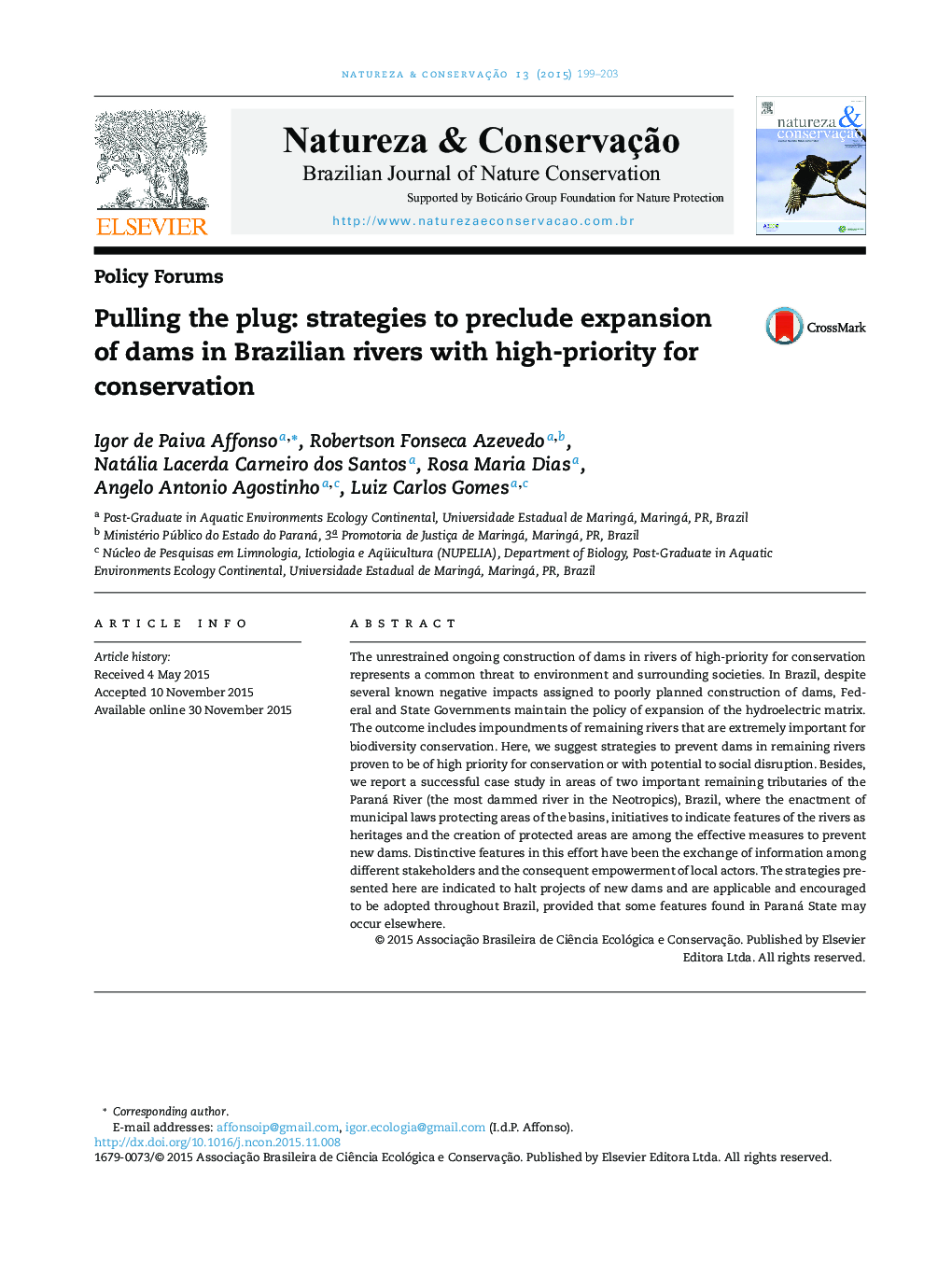| Article ID | Journal | Published Year | Pages | File Type |
|---|---|---|---|---|
| 4400857 | Natureza & Conservação | 2015 | 5 Pages |
Abstract
The unrestrained ongoing construction of dams in rivers of high-priority for conservation represents a common threat to environment and surrounding societies. In Brazil, despite several known negative impacts assigned to poorly planned construction of dams, Federal and State Governments maintain the policy of expansion of the hydroelectric matrix. The outcome includes impoundments of remaining rivers that are extremely important for biodiversity conservation. Here, we suggest strategies to prevent dams in remaining rivers proven to be of high priority for conservation or with potential to social disruption. Besides, we report a successful case study in areas of two important remaining tributaries of the Paraná River (the most dammed river in the Neotropics), Brazil, where the enactment of municipal laws protecting areas of the basins, initiatives to indicate features of the rivers as heritages and the creation of protected areas are among the effective measures to prevent new dams. Distinctive features in this effort have been the exchange of information among different stakeholders and the consequent empowerment of local actors. The strategies presented here are indicated to halt projects of new dams and are applicable and encouraged to be adopted throughout Brazil, provided that some features found in Paraná State may occur elsewhere.
Related Topics
Life Sciences
Agricultural and Biological Sciences
Ecology, Evolution, Behavior and Systematics
Authors
Igor de Paiva Affonso, Robertson Fonseca Azevedo, Natália Lacerda Carneiro dos Santos, Rosa Maria Dias, Angelo Antonio Agostinho, Luiz Carlos Gomes,
